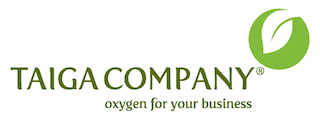Building a Successful Freelancing Business Online

While some people enjoy working in a 9-5 role, others crave the excitement and responsibility that comes with being your own boss. Freelancing gives you the opportunity to carve out your own niche and do something you love. What’s more – you can combine freelancing with your current role as an employee and boost your income, if you choose too.
Of course, building your own freelance business isn’t always straightforward. Creating any enterprise from scratch can be challenging, so it’s important to be prepared for what’s ahead. With these handy tips, you can begin planning for a successful career as a freelance business owner now…
Choose your business focus
Before you can begin working, you’ll need to decide exactly what it is you want to do. Perhaps you’ve always had a burning ambition to develop a product or maybe you’ve got a great idea for a service business ? Alternatively, you might decide to use your professional experience to your advantage and use it as the basis for your freelance career.
When you’re choosing what type of business you want to launch, take the time to really think about the type of role you want. If you’re eager to work from home, you won’t want a business that involves traveling to client sites on a regular basis, for example. Being a freelancer gives you the chance to create your ideal working environment, so make the most of the opportunity.
Research your market
Just because you think your business idea is fantastic, it doesn’t necessarily mean that other people will agree with you! Before you get too far into the planning stage, be sure to research your market and make sure there is a demand for your products or services.
Fortunately, the internet makes it easier than ever to carry out market research activities. Instead of hosting your own focus groups, you can access databases of willing participants within your target demographic. This means you can carry out your research quickly and cost-effectively while building your freelance business.
Locate potential clients
Acquiring new customers is arguably the biggest challenge for any business, so start to think about how you’ll attract clients or customers early on. When you’re running your business online, you can rely on the internet to connect you with your target audience, providing you know where to look.
There are many sites that are dedicated to matching clients with freelancers, for example. You’ll even find niche marketplace sites that post short-term audio visual jobs , copywriting projects or website development roles. Although you’ll typically need to pay a fee or commission to the site, this can be an easy way to pick up clients, particularly while you’re establishing your new business.
Formally set up your business
When you’re working as a freelancer , you have the option to register as self-employed. Many people enjoy the flexibility this offers but it does mean that your personal finances and assets are tied into your business.
If you want to create distance between your personal assets and your business, you might prefer to register as a limited company. Some people decide to form a company because they believe that it creates a better impression, but this depends on your industry and the type of clients you’re aiming to attract.
Whether you decide to operate on a self-employed basis, register a limited company or form a partnership, make sure you’ve completed the necessary paperwork, and submitted the appropriate documentation. This will give you peace of mind that your tax, legal and financial obligations have been met.
Learn about SEO
When you’re running a business online, search engine optimization (SEO) is essential for success. Even if your business will be trading offline as well, having online visibility helps to create brand awareness and increases your reach within your target demographic.
SEO is an entire industry in itself, so don’t expect to learn everything you need to know in an instant. In many cases, it can be more effective to outsource your SEO and online advertising to a third-party company or another freelancer who specializes in this area.
However, learning the basics and understanding why SEO is so important for your business will stand you in good stead for the future.
In order for your website to be effective, it needs to be designed well in order to attract and convert visitors into customers. If you’ve never built a site before, then it’s worth consulting Squarespace web designers to help you get up and running fast with your website.
Set up social media profiles
If you want to establish yourself as a successful freelancer, you’ll need to have an active presence on social media. Take a look at the platforms that are most popular with your target audience and set up profiles on each one.
When you post and share content on social media, you get the opportunity to showcase your talents, establish your specialties, and create awareness of your services. While self-promotion is expected, make sure your social media posts offer more than just that. Engaging with people on topical issues and sharing industry news is a great way to gain fans and followers on social media.
Build a professional network
Working as a freelancer can be somewhat lonely, particularly if it’s your full-time role. Connecting with other freelancers gives you the opportunity to build your network and learn from other people.
Furthermore, liaising with other freelancers may give you the chance to gain new clients or customers. Informal partnerships with subcontractors who offer similar but not competing services ensure you can recommend one another’s services. Personal endorsements carry a lot of weight, so this can be an excellent way to get free promotion and expand your customer base.
When to Launch a Freelance Business
Once you’ve decided what your business will entail, it’s tempting to jump ahead and start advertising your services straight away. However, you run the risk of trying to do too much at once if you throw yourself into the deep end too quickly.
Take the time to research your market, create a professional website, and establish your SEO and social media strategies before you even think about trading. Once you’ve got the essentials covered, you’ll be well-placed to launch your business and start your career as a fully-fledged freelancer.
Build Sustainability into your business
As a reminder, every business can be a sustainable business. The first step is to ensure that sustainability is at the core of your business and build from there.
With these tips, you’ll be able to launch your freelance business online in no time!


